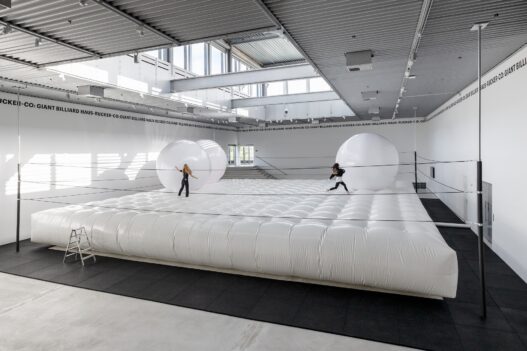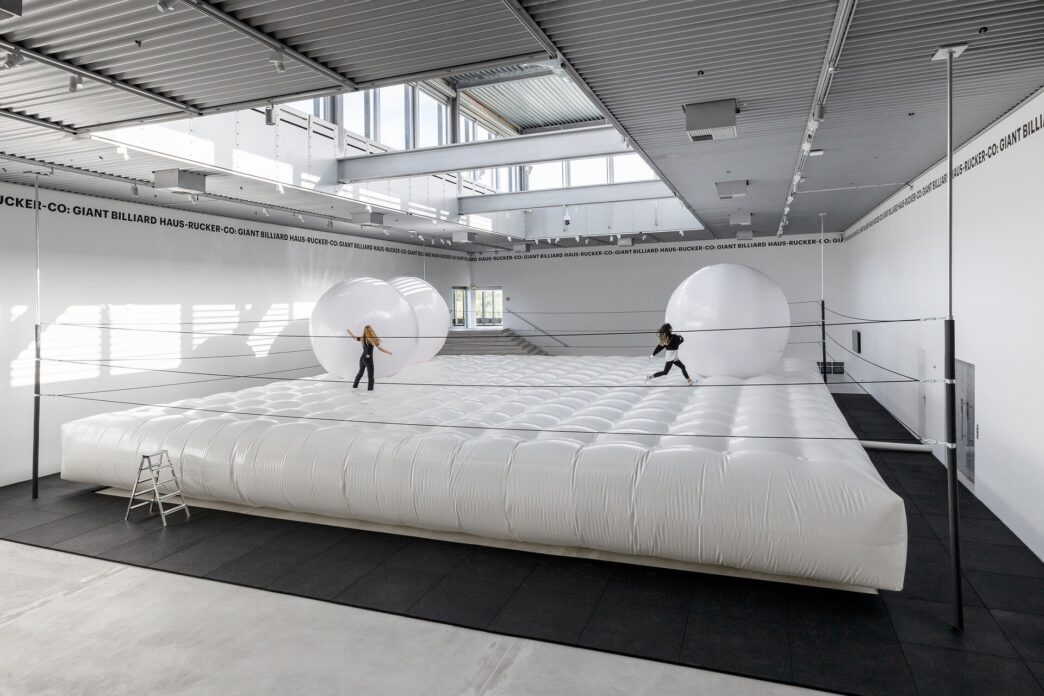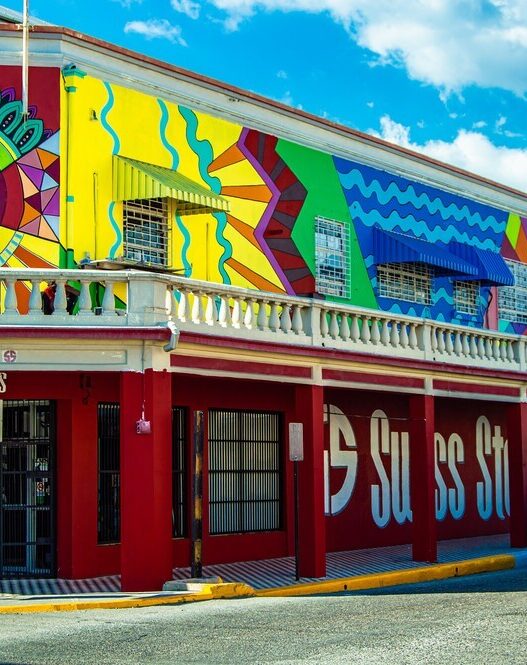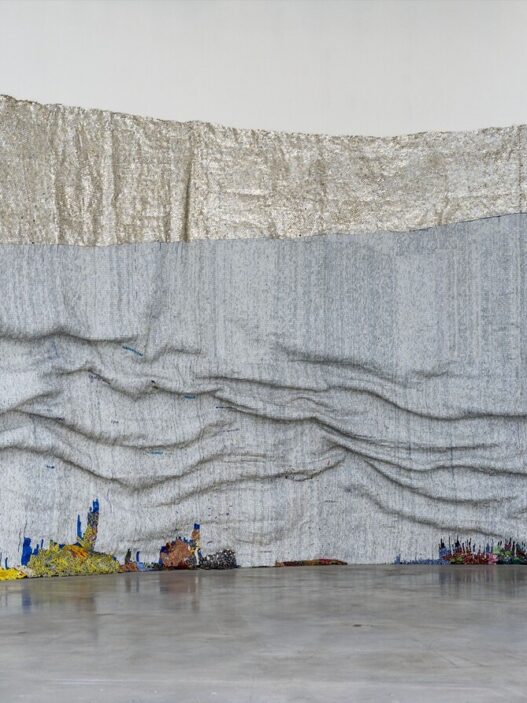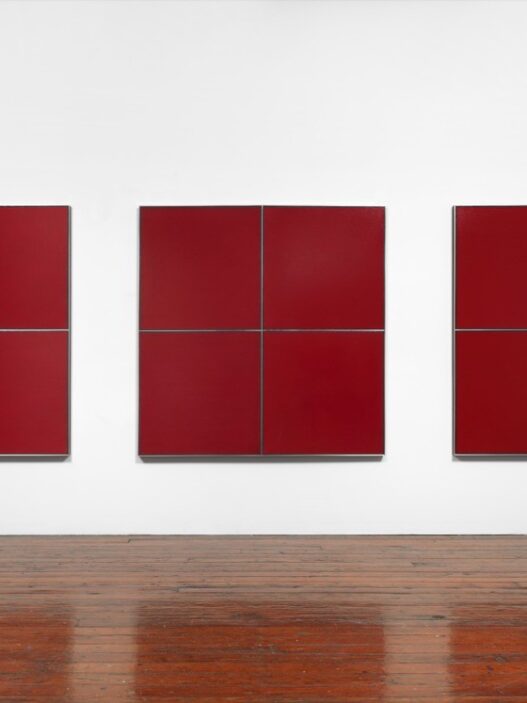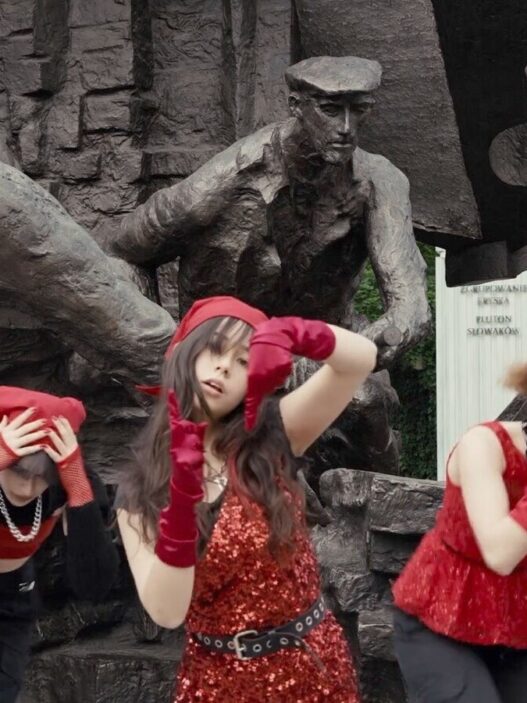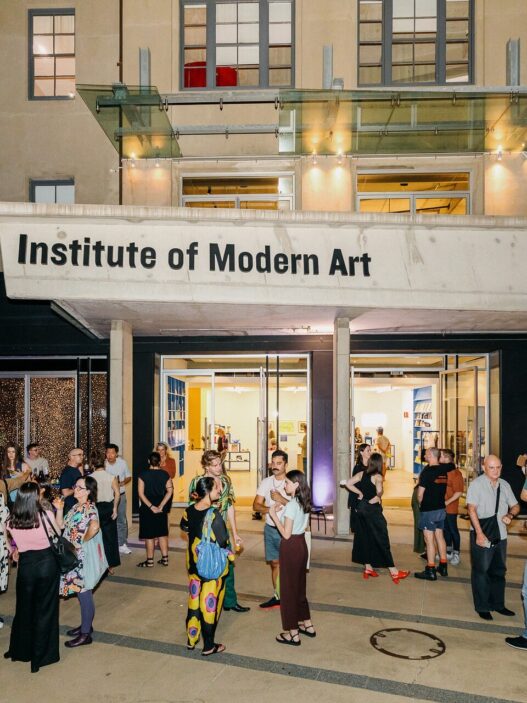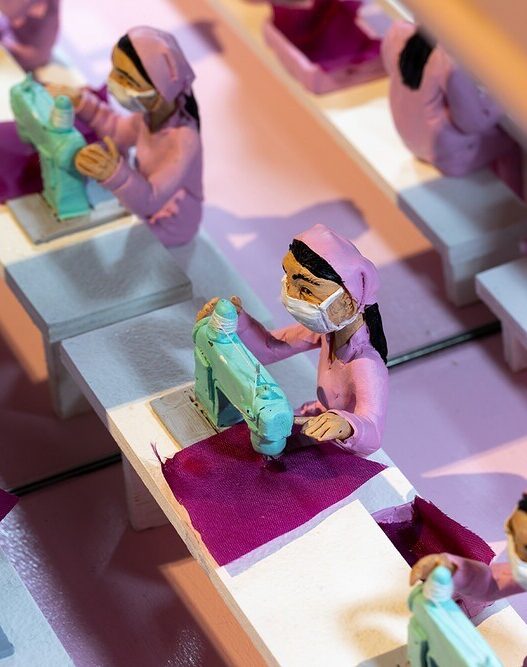October 8, 2022–April 16, 2023
Giant Billiard, a legendary work by the Austrian architect/artist collective Haus-Rucker-Co, is currently on display at the ARKEN Museum of Modern Art, south of Copenhagen. For the first time ever in Scandinavia, the art is on display at this exhibition.
A three-meter-tall inflatable ball rolls quickly in your direction. How do you behave? What do you do while bumbling around on a huge white air mattress: jump for your life, let yourself be run over, or throw the ball to someone else? Whatever you decide, it will undoubtedly be a distinctive experience. Despite the fact that you are in an art museum with all of its customary guidelines and limitations, the piece Giant Billiard specifically urges you to play, regardless of your age.
Giant Billiard’s games make us think about how our society and our daily lives are structured. How does the environment we live in influence how we connect with others? Jenny Lund, a curator, explains why the Giant Billiard by Haus-Rucker-Co. is still important today.
“With Giant Billiard, Haus-Rucker-Co explores how play and games can nurture communities and prompt change in everyday life and in society. Back in the late 1960s, the artist collective responded to the growing sense of alienation in consumer society as well as to the rise in air pollution by creating utopian models which offer up new social spaces and new ideas about the future,” says curator Jenny Lund.
“In a time of growing social inequality and isolation, one where communities are threatened by anti-democratic trends, a food crisis and the major climate challenges Haus-Rucker-Co provides architectural visions of togetherness and dialogue,” Lund continues.
Rebellious architects
In 1970, Haus-Rucker-Co, a boisterous and disobedient group of Austrian architects and artists, produced Giant Billiard. Laurids Ortner, Günter Zamp Kelp, and Klaus Pinter were the namesakes. The three guys sought to question conventional notions of space, dismantle power structures, and build utopian cities with abundant fresh air and a strong sense of community. The times demanded dramatic changes.
The projects produced by the organization were creative, and Haus-Rucker-Co questioned accepted wisdom. They developed futuristic masks that let the wearer to perceive the world in completely different colors and shapes, as well as livable bubbles that crashed through the windows of highrise buildings. Additionally, they asked the populace to construct a city out of bread and cake that everyone could then participate in devouring. The inhabitants formed a new society, and the city actually fell to pieces.
The artist collaboration Haus-Rucker-Co relocated its headquarters from Vienna to Düsseldorf in 1972, and Manfred Ortner, a recently graduated painter, joined the organization. Carroll Michels, an artist and writer, joined the group a year later. Currently, each individual Haus-Rucker-Co member is active.
Giant Billiard was first displayed in 1970 at Vienna’s Museum des 20. Jahrhunderts (now mumok), and then in 1971 at New York’s Museum for Contemporary Crafts. The piece was recreated in 2019 at the mumok in Vienna, and it is now on display at the ARKEN exhibition for the first time ever in Scandinavia.
At ARKEN, Giant Billiard will be on display till April 16, 2023.
ARKEN Museum of Modern Art
Skovvej 100
2635 Ishøj
Denmark









